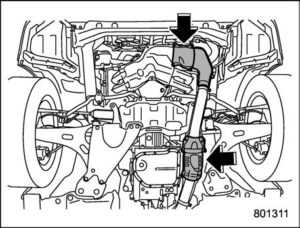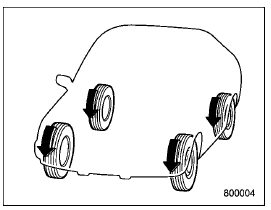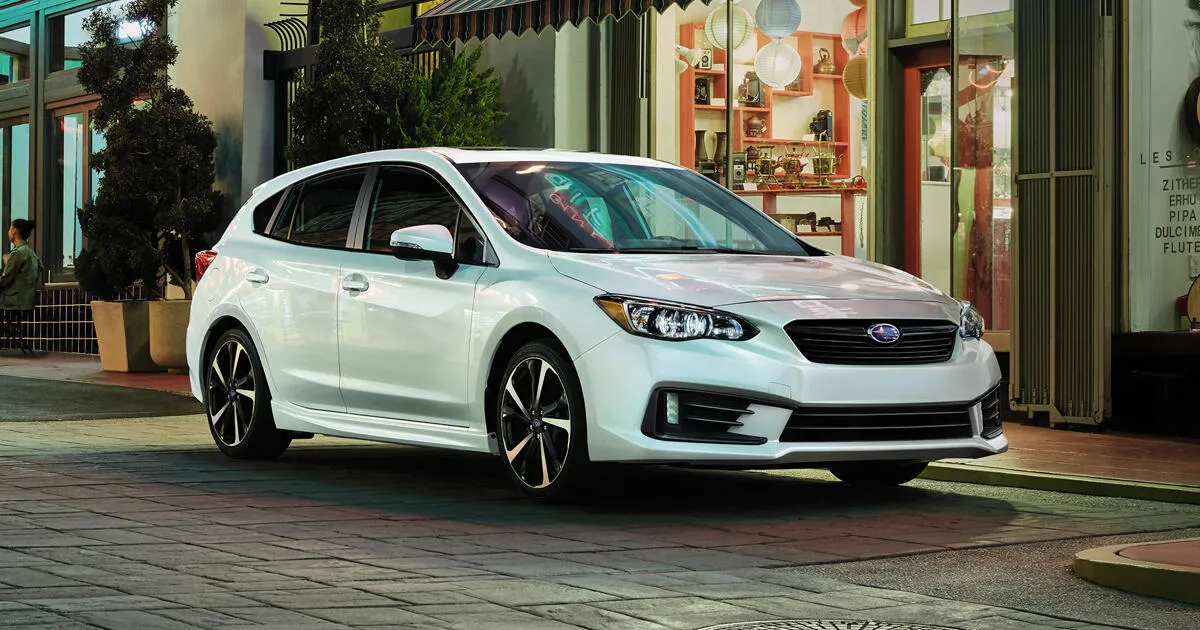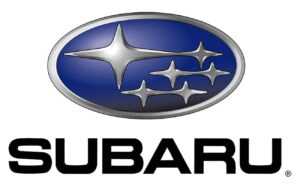2023 Subaru Impreza New vehicle break-in driving – the first 1,000 miles (1,600 km)Base Sedan
Before you head out on the road with your brand-new 2023 Subaru Impreza Base Sedan, there is a very important step: the break-in time. This first part of your car’s life is very important because it sets the stage for its performance and reliability in the future. The break-in process is a lot like taking care of a growing plant. It requires just the right amount of care and attention to let the engine and other important parts get used to each other and work at their best. In the next few paragraphs, we’ll answer some of the most important questions about this break-in period. We’ll also talk about the recommended practices, driving habits, and maintenance routines that will help you and your Subaru Impreza get along well and last for a long time.
New vehicle break-in driving – the first 1,000 miles (1,600 km)
The performance and long life of your vehicle are dependent on how you handle and care for your vehicle while it is new. Follow these instructions during the first 1,000 miles (1,600 km):
- Do not race the engine. And do not allow engine speed to exceed 4,000 rpm except in an emergency.
- Do not drive at one constant engine or vehicle speed, either fast or slow.
- Avoid starting suddenly and rapid acceleration, except in an emergency.
- Avoid hard braking, except in an emergency.
- The same break-in procedures should be applied to an overhauled engine, newly mounted engine or when brake pads are replaced with new ones.
Fuel economy hints
The following suggestions will help to save your fuel.
- Select the proper gear position for the speed and road conditions.
- Avoid sudden acceleration or deceleration. Always accelerate gently until you reach the desired speed. Then try to maintain that speed for as long as possible.
- Do not pump the accelerator and avoid racing the engine.
- Avoid unnecessary engine idling.
- Keep the engine properly tuned.
- Keep the tires inflated to the correct pressure shown on the tire inflation pressure label, which is located under the door latch on the driver’s side. Low pressure will increase tire wear and fuel consumption.
- Use the air conditioner only when necessary.
- Keep the front and rear wheels in proper alignment.
- Avoid carrying unnecessary luggage or cargo.
Engine exhaust gas (carbon monoxide)
- Never inhale engine exhaust gas. Engine exhaust gas contains carbon monoxide, a colorless and odorless gas which is dangerous, or even lethal, if inhaled.
- Always properly maintain the engine exhaust system to prevent engine exhaust gas from entering the vehicle.
- Never run the engine in a closed space, such as a garage, except for the brief time needed to drive the vehicle in or out of it.
- Avoid remaining in a parked vehicle for a lengthy time while the engine is running. If that is unavoidable, then use the ventilation fan to force fresh air into the vehicle.
- Always keep the front ventilator inlet grille free from snow, leaves or other obstructions to ensure that the ventilation system always works properly.
- If at any time you suspect that exhaust fumes are entering the vehicle, have the problem checked and corrected as soon
as possible. If you must drive under these conditions, drive only with all windows fully open. - Keep the rear gate closed while driving to prevent exhaust gas from entering the vehicle.
NOTE
Due to the expansion and contraction of the metals used in the manufacture of the exhaust system, you may hear a crackling sound coming from the exhaust system for a short time after the engine has been shut off. This sound is normal.
Catalytic converter
The catalytic converter is installed in the exhaust system. It serves as a catalyst to reduce HC, CO and NOx in exhaust gases, thus providing cleaner exhaust.
To avoid damage to the catalytic converter:
- Use only unleaded fuel. Even a small amount of leaded fuel will damage the catalytic converter.
- Never start the engine by pushing or pulling the vehicle.
- Avoid racing the engine.
- Never turn the ignition switch to the “OFF” position while the vehicle is moving.
- Keep your engine tuned up. If you feel backfiring or incomplete combustion), have your vehicle checked and repaired by an authorized SUBARU dealer.
- Do not apply undercoating or rust-prevention treatment to the heat shield of the catalytic converter and the exhaust system.
- Do not drive with an extremely low fuel level.
WARNING
- Avoid fire hazards. Do not drive or park the vehicle anywhere near flammable materials (e.g., grass, paper, rags or leaves),
because the catalytic converter operates at very high temperatures. - Keep everyone and flammable materials away from the exhaust pipe while the engine is running. The exhaust gas is very hot.
Periodic inspections
To keep your vehicle in the best condition at all times, always have the recommended maintenance services listed in the maintenance schedule in the “Warranty and Maintenance Booklet” performed at the specified time or mileage intervals.
Driving in foreign countries
When planning to use your vehicle in another country:
- Confirm the availability of the correct fuel. Refer to “Fuel requirements” P299.
- Comply with all regulations and requirements of each country
Driving tips for AWD models
WARNING
- Always maintain a safe driving speed according to the road and weather conditions in order to avoid having an accident on a
sharp turn, during sudden braking or under other similar conditions. - Always use the utmost care in driving – overconfidence because you are driving an All- Wheel Drive vehicle could easily lead to a serious accident.
- When replacing or installing tire(s), all four tires must be the same for following items.
- Size
- Speed symbol
- Load index
- Circumference
- Construction
- Manufacturer
- Brand (tread pattern)
- Degrees of wear
- For the items (a) to (c), you must obey the specification that is printed on the tire inflation pressure label. The tire inflation pressure
label is located on the driver’s door pillar. If all the four tires are not the same for items (a) to (h), serious mechanical damage could be caused to the drivetrain of the car, and affect the followings.- Ride
- Handling
- Braking
- Speedometer/Odometer calibration
Clearance between the body and tires It also may be dangerous and lead to loss of vehicle control, and it can lead to an accident.
CAUTION
If you use a temporary spare tire to replace a flat tire, be sure to use the original temporary spare tire stored in the vehicle. Using other sizes may result in severe mechanical damage to the drivetrain of your vehicle.
All-Wheel Drive distributes the engine power to all four wheels. AWD models provide better traction when driving on slippery, wet or snow-covered roads and when moving out of mud, dirt and sand. By shifting power between the front and rear wheels, SUBARU AWD can also provide added traction during acceleration and added engine braking force during deceleration.
Therefore, your SUBARU AWD vehicle may handle differently than an ordinary two wheel drive vehicle and it contains some features unique to AWD. For safety purposes as well as to avoid damaging the AWD system, you should keep the following tips in mind.
An AWD model is better able to climb conditions than a two wheel drive vehicle. There is little difference in handling, however, during extremely sharp turns or sudden braking. Therefore, when driving down a slope or turning corners, be sure to reduce your speed and maintain an ample distance from other vehicles.
- Always check the cold tire pressure before starting to drive. The recommended tire pressure is provided on the tire inflation pressure label, which is located under the door latch on the driver’s side.
- Frequent driving of an AWD vehicle under hard-driving conditions such as steep hills or dusty roads will necessitate more frequent replacement of the following items than that specified in the “Warranty and Maintenance Booklet”.
- Engine oil
- Brake fluid
- Rear differential gear oil
- Continuously variable transmission fluid
- Front differential gear oil
There are some precautions that you must observe when towing your vehicle. For detailed information, refer to“ Towing”
FAQ
Breaking in a new vehicle helps to ensure that the engine and other critical components settle into their optimal operating conditions. This can improve the vehicle’s long-term performance and longevity.
The break-in period for most modern vehicles, including the 2023 Subaru Impreza, is typically the first 1,000 miles (approximately 1,600 kilometers).
During the break-in period, avoid aggressive driving, heavy towing, and high-speed driving. Keep engine RPMs moderate and vary your speed.
Yes, you can drive at highway speeds, but try to avoid extended periods of high-speed driving. It’s important to vary your speed and not maintain a constant speed for too long.
Using cruise control is generally fine, but it’s a good idea to avoid using it exclusively during the break-in period. Varying your speed manually can help components wear in more evenly.
It’s best to avoid heavy towing during the break-in period, as towing places additional stress on the engine and drivetrain components.
Yes, it’s a good idea to avoid full throttle acceleration during the break-in period. Gradually increase your speed rather than rapidly flooring the accelerator.
Yes, you can go on a road trip, but try to follow the recommended break-in guidelines by varying your speed and not driving at constant high speeds for extended periods.
It’s a good practice to follow the manufacturer’s recommended oil type and change intervals. Using a high-quality oil can help protect your engine during the break-in period.
After the break-in period, you can gradually start increasing the intensity of your driving. However, always drive responsibly and within legal limits.
It’s generally better to avoid off-roading during the break-in period, as rough terrain can put additional stress on the vehicle’s components.
After the break-in period, it’s a good idea to follow the manufacturer’s recommended maintenance schedule for oil changes, fluid checks, and other routine maintenance tasks.
The break-in period is typically over after the first 1,000 miles. However, it’s always a good idea to consult your owner’s manual for specific recommendations.
Many modern vehicles, including the 2023 Impreza, are compatible with synthetic oils. Check your owner’s manual for guidance on the recommended oil type.
Subaru provides general guidelines for breaking in their vehicles, and these guidelines are usually included in the owner’s manual. It’s recommended to follow these guidelines to ensure the best performance and longevity of your vehicle.
Useful Link
View Full User Guide: Subaru Impreza 2023 Base Sedan User Guide
Subaru Impreza 2022 Base Sedan User Guide
2024 Subaru Impreza Specs, Price, Features, Mileage (Brochure)


